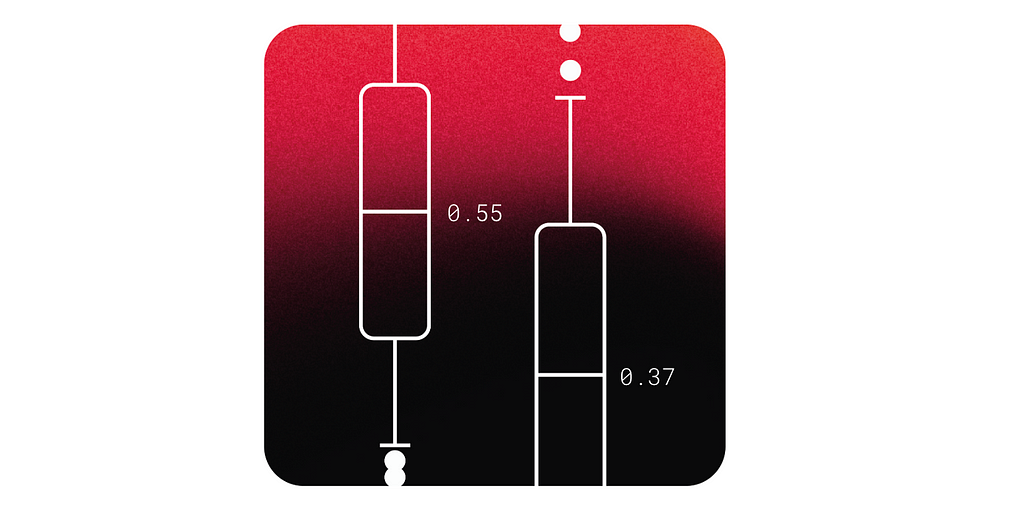The Ultimate List of 30 Best Call Center Metrics
Managing a call center is no small feat. It’s a dynamic and fast-paced environment where efficiency, customer satisfaction, and agent performance balances perfectly. To succeed in such a challenging landscape,... The post The Ultimate List of 30 Best Call Center Metrics appeared first on Bigly Sales.

Managing a call center is no small feat. It’s a dynamic and fast-paced environment where efficiency, customer satisfaction, and agent performance balances perfectly.
To succeed in such a challenging landscape, it’s crucial to monitor and understand the right call center metrics. These metrics serve as a compass, guiding decision-makers to improve service quality, streamline operations, and ultimately enhance the overall customer experience.
Here, we’ll explore the essential call center metrics that every manager and team leader should know and use to achieve success.
What are Call Center Metrics?
Call center metrics are measurable values that track the performance and effectiveness of a call center. They provide insights into various aspects of call center operations, including customer satisfaction, agent productivity, and operational efficiency.
By monitoring these metrics, businesses can identify strengths, pinpoint areas for improvement, and take proactive steps to enhance the overall customer service experience. Metrics are not just numbers; they are the story of how your call center operates and performs daily.
Understanding and utilizing these metrics is the key to ensuring your call center aligns with the company’s goals and customer expectations. Whether you’re looking to reduce call wait times, improve resolution rates, or boost agent morale, there’s a metric to help guide your efforts.
Best Call Center Metrics
Now is the time to explore some of the best call center metrics:
1. First Call Resolution (FCR)
First Call Resolution is a cornerstone of customer satisfaction and operational efficiency. It measures the percentage of customer issues resolved during the first interaction without having follow-up calls. A high FCR rate indicates that your agents are well-equipped to handle customer inquiries quickly and effectively. This metric is crucial because it saves customers’ time and reduces the team’s workload by minimizing repeat calls.
Improving FCR involves agent training, robust knowledge bases, and streamlined processes. Agents should have access to all the necessary tools and information to resolve issues during the first interaction.
Empowering agents with autonomy and decision-making capabilities can also contribute to higher FCR rates. Striving for an FCR rate of 70% to 75% is a good benchmark, but it’s important to tailor this target to your industry and customer base.
2. Customer Satisfaction Score (CSAT)
Customer Satisfaction Score (CSAT) is one of the most direct indicators of how happy customers are with their interactions. It’s typically measured through surveys where customers rate their experience on a scale of 1 to 5. High CSAT scores demonstrate that your call center meets or exceeds customer expectations.
To boost CSAT, focus on providing personalized service. Customers value interactions where they feel heard and understood. Reducing wait times, resolving issues promptly, and showing empathy during calls are all ways to enhance customer satisfaction. Remember, a happy customer is likely to return and to recommend your business to others.
3. Net Promoter Score (NPS)
Net Promoter Score is a widely used metric to measure customer loyalty and the likelihood of them recommending your company to others. Customers are asked a simple question: “How likely are you to recommend us to a friend or colleague?” Their responses categorize them as promoters, passives, or detractors.
An NPS above 50 is considered excellent and signifies strong customer relationships. This metric reflects customer satisfaction and provides insights into long-term loyalty. To improve your NPS, focus on delivering consistently excellent service. Address customer pain points proactively and invest in creating memorable customer experiences. NPS is not just a number; it’s a reflection of how well you’re building trust and rapport with your customers.
4. Average Handle Time (AHT)
Average Handle Time is a metric that tracks the average duration of customer interaction, including talk time, hold time and after-call work. While a lower AHT indicates efficiency, it should never come at the expense of service quality. The goal is to resolve customer issues thoroughly while avoiding unnecessary delays.
Reducing AHT requires optimizing workflows and eliminating bottlenecks. For example, using AI tools to assist agents with real-time suggestions can help speed up resolution times.
Additionally, providing customers with self-service options for common queries can reduce the workload on agents, allowing them to focus on more complex issues. The key is to find the right balance between speed and quality.
5. Average Speed of Answer (ASA)
Average Speed of Answer measures how quickly agents respond to incoming calls. Long wait times can frustrate customers and lead to higher abandonment rates. A low ASA demonstrates that your call center is attentive and responsive to customer needs.
To improve ASA, ensure you have the right staffing levels and implement intelligent call routing systems. Analyzing call volume patterns can help you anticipate peak times and adjust schedules accordingly. Remember, customers value their time, and a quick response can leave a lasting positive impression.
6. Service Level
Service Level is the percentage of calls answered within a specified time frame, such as 20 seconds. It’s a key indicator of your call center’s ability to meet customer demand. The industry standard is to answer 80% of calls within 20 seconds, but this can vary depending on your specific goals and customer expectations.
Improving service levels involves a combination of accurate forecasting, efficient scheduling, and effective call handling. By reducing inefficiencies in your operations, you can ensure that customers are served promptly and efficiently.
7. Call Abandonment Rate
Call Abandonment Rate tracks the percentage of calls where customers hang up before reaching an agent. High abandonment rates often point to long wait times or inadequate staffing. This metric is critical because abandoned calls represent missed opportunities to assist customers and potentially convert inquiries into sales.
To reduce call abandonment, consider offering callback options so customers don’t have to wait on hold. Providing real-time updates on estimated wait times can also help manage customer expectations and reduce frustration. Ensuring adequate staffing during peak hours is another effective strategy.
8. Customer Effort Score (CES)
Customer Effort Score measures how easy it is for customers to resolve their issues. It’s a straightforward metric that provides valuable insights into the customer journey. A low effort score means customers can get their problems resolved quickly and efficiently, which in turn boosts satisfaction and loyalty.
Simplifying processes and empowering agents with the right tools are key to improving CES. For instance, reducing the need for multiple transfers and ensuring agents have access to comprehensive knowledge bases can significantly lower customer effort. The easier it is for customers to do business with you, the more likely they are to remain loyal.
9. Occupancy Rate
Occupancy Rate measures the percentage of time agents spend handling calls versus waiting for calls. While a high occupancy rate indicates efficient use of agent time, it’s important not to overburden agents, as this can lead to burnout and reduced morale.
The ideal occupancy rate is typically between 85% and 90%. To achieve this, ensure that agents have manageable workloads and that breaks are scheduled appropriately. Balancing efficiency with agent well-being is essential for maintaining a productive and motivated workforce.
10. Agent Attrition Rate
Agent Attrition Rate measures the rate at which agents leave your organization. High attrition can disrupt operations and lead to increased recruitment and training costs. Retaining skilled agents is critical for maintaining consistency and delivering high-quality service.
To reduce attrition, focus on creating a positive work environment. Offer competitive compensation, provide opportunities for career development, and recognize outstanding performance. When agents feel valued and supported, they are more likely to stay with your organization.
11. Quality Assurance Scores
Quality Assurance Scores evaluate the performance of agents based on predefined standards. These scores assess factors like adherence to scripts, empathy, and problem-solving skills. Regular monitoring and coaching can help agents improve their performance and meet quality expectations.
Providing agents with constructive feedback and training opportunities is key to maintaining high-quality standards. Encourage agents to take ownership of their performance and celebrate their successes to foster a culture of excellence.
12. Shrinkage
Shrinkage refers to the percentage of time agents are unavailable for call handling due to factors like breaks, training, or absenteeism. Monitoring shrinkage helps call centers manage staffing levels effectively and ensure that there are enough agents available to handle calls during peak times.
Keeping shrinkage below 30% is a good target. To achieve this, plan schedules carefully and account for non-productive time when forecasting staffing needs. By minimizing shrinkage, you can maintain service levels and keep operations running smoothly.
13. Transfer Rate
Transfer Rate measures how often calls are transferred to another agent or department. A high transfer rate can frustrate customers and indicate inefficiencies in call routing or insufficient training.
To reduce transfer rates, equip agents with comprehensive knowledge bases, and improve call routing systems. Ensuring that agents are well-trained to handle a wide range of inquiries can also minimize the need for transfers and enhance the customer experience.
14. Call Volume
Call Volume measures the total number of incoming and outgoing calls handled by the call center over a given period. This metric is essential for understanding the overall demand for your services. High call volumes may indicate a need for more agents or process improvements, while sudden spikes could signal a specific issue impacting customers. By closely monitoring call volume, you can optimize staffing and ensure your team is prepared for peak periods.
15. Hold Time
Hold Time tracks the average duration customers spend on hold during their calls. Long hold times can lead to frustration and dissatisfaction, so keeping this metric low is crucial. Businesses can reduce hold times by streamlining workflows, providing agents with quick access to information, and employing hold music or messages to keep customers engaged.
16. Callback Rate
Callback Rate measures the frequency at which customers request a callback instead of waiting on hold. High callback rates can improve customer satisfaction by offering a convenient alternative to waiting. Implementing an efficient callback system and ensuring timely follow-ups are key to leveraging this metric for better service.
17. Cost Per Call
Cost Per Call calculates the total operational cost divided by the number of calls handled. This metric helps call centers measure financial efficiency. Reducing cost per call often involves streamlining operations, using technology to automate repetitive tasks, and improving agent training to resolve issues faster.
18. Resolution Rate
Resolution Rate tracks the percentage of customer inquiries successfully resolved by the call center. It goes hand in hand with First Call Resolution but can also account for issues resolved in multiple interactions. A high-resolution rate reflects the competence of your team and the effectiveness of your processes.
19. Average Queue Time
Average Queue Time measures the time customers spend in the queue before speaking to an agent. Long queue times can frustrate customers and lead to higher abandonment rates. Addressing this metric involves optimizing staffing, employing intelligent call routing, and monitoring call volume patterns.
20. Customer Retention Rate
Customer Retention Rate measures the percentage of customers who remain loyal to your business after interacting with the call center. A high retention rate signifies that your call center is solving problems and building lasting relationships.
To improve retention, focus on personalized service and proactively address customer needs.
21. After-Call Work Time (ACW)
After-Call Work Time refers to the time agents spend completing tasks related to a call after it ends, such as updating records or sending follow-up emails. Reducing ACW involves providing agents with user-friendly tools and automating repetitive tasks to enhance efficiency.
22. Repeat Call Rate
Repeat Call Rate measures the percentage of customers who call back for the same issue. A high repeat call rate can indicate gaps in agent training, knowledge, or resources. Addressing this metric requires identifying recurring issues and empowering agents with the tools and knowledge to resolve problems thoroughly.
23. Agent Turnover Rate
Agent Turnover Rate measures how frequently agents leave your call center within a specific timeframe. High turnover rates can lead to increased training costs and disruption.
Improving this metric involves creating a supportive work environment, offering competitive pay, and providing opportunities for growth and recognition.
24. Peak Hour Traffic
Peak Hour Traffic identifies the busiest hours of operation based on call volume. Understanding these patterns allows you to optimize scheduling, ensuring adequate staffing during peak times to maintain service levels and customer satisfaction.
25. Percentage of Calls Blocked
Percentage of Calls Blocked tracks the proportion of incoming calls that fail to connect due to insufficient resources, such as limited agent availability. High percentages indicate a need for better staffing or infrastructure. Ensuring proper capacity planning and employing virtual assistants can help reduce blocked calls.
26. Customer Complaints
Customer Complaints measure the number of grievances reported by customers during or after their interactions. While complaints may seem negative, they provide valuable insights into areas that need improvement. Monitoring and addressing these complaints can help enhance service quality and customer satisfaction.
27. Contact Resolution Time
Contact Resolution Time calculates the total time it takes to resolve a customer’s issue from start to finish, including all interactions. A shorter resolution time indicates efficient processes and agent effectiveness. Streamlining workflows and providing agents with advanced tools can improve this metric.
28. Call Escalation Rate
Call Escalation Rate tracks the percentage of calls that require involvement from a supervisor or higher-level support. While escalations are sometimes necessary, a high rate can signal insufficient training or inadequate empowerment of frontline agents.
Reducing escalations involves improving agent training and equipping them with the authority to make decisions.
29. Self-Service Success Rate
Self-Service Success Rate measures the percentage of customers who resolve their inquiries using self-service tools, such as automated menus or knowledge bases, without needing agent assistance. A high success rate reflects effective self-service options, which can reduce call volume and improve customer satisfaction.
30. Customer Lifetime Value (CLV)
Customer Lifetime Value estimates the total revenue a customer will generate throughout their relationship with your business. This metric ties directly to the quality of service provided by the call center.
By focusing on metrics like satisfaction, loyalty, and retention, call centers can significantly impact CLV, driving long-term growth and profitability.
Conclusion
With these 30 call center metrics, you now have a comprehensive roadmap to monitor, analyze, and optimize your call center operations. Each metric offers unique insights that, when combined, create a holistic view of your call center’s performance.
By prioritizing these metrics and aligning them with your business objectives, you can build a high-performing call center that excels in customer satisfaction, agent productivity, and operational efficiency.
Success lies in continuous improvement, leveraging technology, and maintaining a customer-centric approach in every interaction.
The post The Ultimate List of 30 Best Call Center Metrics appeared first on Bigly Sales.
What's Your Reaction?







































